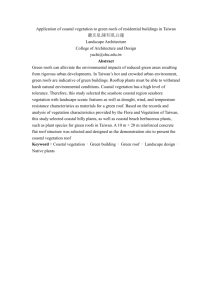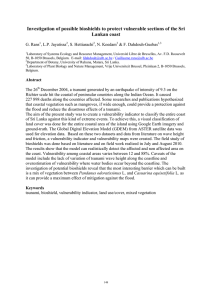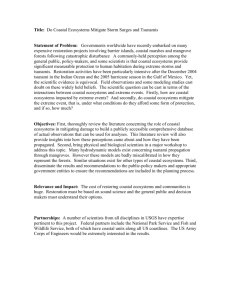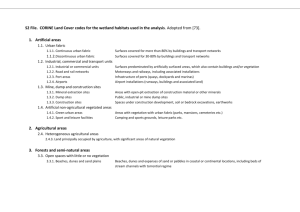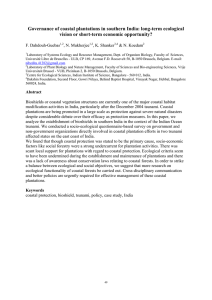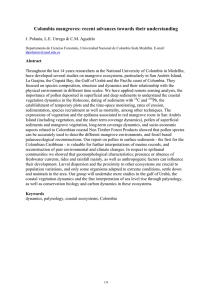SHELTER FROM THE STORM? USE AND MISUSE OF BIOSHIELDS FOR
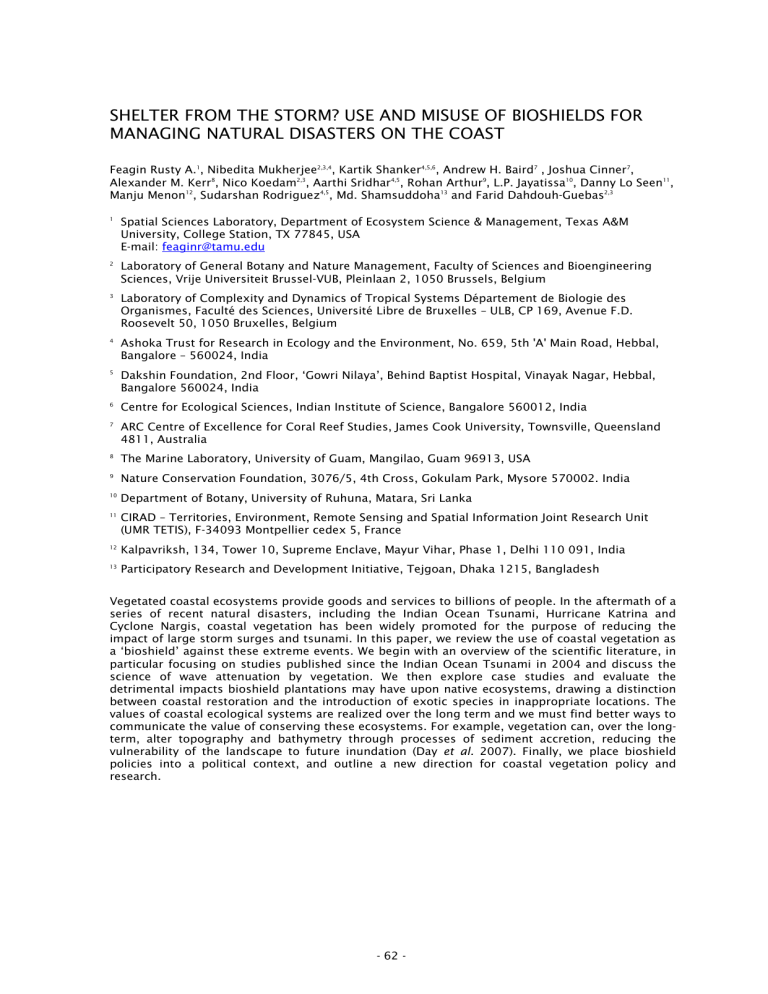
SHELTER FROM THE STORM? USE AND MISUSE OF BIOSHIELDS FOR
MANAGING NATURAL DISASTERS ON THE COAST
Feagin Rusty A.
1 , Nibedita Mukherjee 2,3,4 , Kartik Shanker 4,5,6 , Andrew H. Baird 7
Alexander M. Kerr
Manju Menon 12
8 , Nico Koedam 2,3 , Aarthi Sridhar 4,5
, Sudarshan Rodriguez 4,5
, Rohan Arthur
, Md. Shamsuddoha 13
9
, Joshua Cinner 7
, L.P. Jayatissa 10
and Farid Dahdouh-Guebas 2,3
,
, Danny Lo Seen 11 ,
1 Spatial Sciences Laboratory, Department of Ecosystem Science & Management, Texas A&M
University, College Station, TX 77845, USA
E-mail: feaginr@tamu.edu
2 Laboratory of General Botany and Nature Management, Faculty of Sciences and Bioengineering
Sciences, Vrije Universiteit Brussel-VUB, Pleinlaan 2, 1050 Brussels, Belgium
3 Laboratory of Complexity and Dynamics of Tropical Systems Département de Biologie des
Organismes, Faculté des Sciences, Université Libre de Bruxelles – ULB, CP 169, Avenue F.D.
Roosevelt 50, 1050 Bruxelles, Belgium
4 Ashoka Trust for Research in Ecology and the Environment, No. 659, 5th 'A' Main Road, Hebbal,
Bangalore – 560024, India
5 Dakshin Foundation, 2nd Floor, ‘Gowri Nilaya’, Behind Baptist Hospital, Vinayak Nagar, Hebbal,
Bangalore 560024, India
6 Centre for Ecological Sciences, Indian Institute of Science, Bangalore 560012, India
7 ARC Centre of Excellence for Coral Reef Studies, James Cook University, Townsville, Queensland
4811, Australia
8 The Marine Laboratory, University of Guam, Mangilao, Guam 96913, USA
9 Nature Conservation Foundation, 3076/5, 4th Cross, Gokulam Park, Mysore 570002. India
10 Department of Botany, University of Ruhuna, Matara, Sri Lanka
11 CIRAD – Territories, Environment, Remote Sensing and Spatial Information Joint Research Unit
(UMR TETIS), F-34093 Montpellier cedex 5, France
12 Kalpavriksh, 134, Tower 10, Supreme Enclave, Mayur Vihar, Phase 1, Delhi 110 091, India
13 Participatory Research and Development Initiative, Tejgoan, Dhaka 1215, Bangladesh
Vegetated coastal ecosystems provide goods and services to billions of people. In the aftermath of a series of recent natural disasters, including the Indian Ocean Tsunami, Hurricane Katrina and
Cyclone Nargis, coastal vegetation has been widely promoted for the purpose of reducing the impact of large storm surges and tsunami. In this paper, we review the use of coastal vegetation as a ‘bioshield’ against these extreme events. We begin with an overview of the scientific literature, in particular focusing on studies published since the Indian Ocean Tsunami in 2004 and discuss the science of wave attenuation by vegetation. We then explore case studies and evaluate the detrimental impacts bioshield plantations may have upon native ecosystems, drawing a distinction between coastal restoration and the introduction of exotic species in inappropriate locations. The values of coastal ecological systems are realized over the long term and we must find better ways to communicate the value of conserving these ecosystems. For example, vegetation can, over the longterm, alter topography and bathymetry through processes of sediment accretion, reducing the vulnerability of the landscape to future inundation (Day et al. 2007). Finally, we place bioshield policies into a political context, and outline a new direction for coastal vegetation policy and research.
- 62 -

